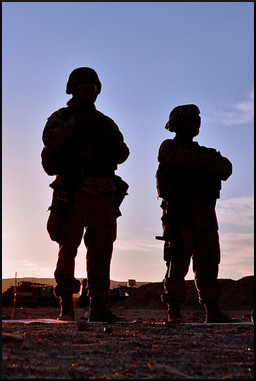
House the Homeless announces the release of a very important document, titled “Traumatic Brain Injury — A Protocol to Help Disabled Homeless Veterans within a Secure, Nurturing Community.” This publication is a joint effort born of the collaboration between House the Homeless, Millennium Health Centers, the Warrior Angels Foundation, and Community First! Village.
After a series of e-mails and lengthy conference calls, initiated by House the Homeless, Inc., we have formed a team that shares the philosophy that, quite possibly, a significant percentage of people experiencing homelessness got there due to a Traumatic Brain Injury. Up until now, these individuals may never have previously been asked to connect a past head injury (or a series of them) to the symptoms of anger, alcoholism, Parkinson’s Disease, Bi-Polar disorder, bad decision making, and other manifestations of TBI.
“Traumatic Brain Injury – a Protocol” descriptive pages about all four organizations, along with the 2016 Traumatic Brain Injury Survey conducted by House the Homeless, and a short history of how the Homeless Veterans in Action project came together to…
[…] create a first of a kind,ongoing program for ten homeless veterans to specifically treat their Traumatic Brain Injury thus combining the two populations of both veterans and people experiencing homelessness.
Here is a short excerpt from Dr. Mark Gordon’s segment of the paper:
Common to all degrees of head trauma (and body trauma) is the unforeseen development of hormone deficiencies…
Studies have shown that the use of conventional medications (antidepressants, anti-anxiety, anti-seizure, and antipsychotic) do not improve upon the underlying cause creating the symptoms associated with Traumatic Brain Injury (Post-Concussion Syndrome) because they do nothing to increase the missing hormones. Psychotherapy does nothing to increase deficient hormones; it only encourages you to accept a poor quality of life and to move on.
Another useful publication is the article “Survey Links Brain Injury to Medical Causes of Homelessness To be Addressed with Hormone Therapy — Follow Up.”
To get up to speed on this problem and need for this planned intervention, we also recommend:
- How to Become Homeless — Have TBI
- Prevent Vet Homelessness with Correct Diagnosis
- Brain Injury, Neglect, and Self-Destruction
- Raw Deals for Homeless Vets
- Heroes of Health Care
- Traumatic Brain Injury — Promising Developments
Kids
For NationalReview.com, Julie Gunlock described that changes that have been taking place in public schools, which she sees as an intensification of the “already pronounced trend of shifting child-care responsibilities from family, friends, and, most of all, parents to schools and government-sponsored programs.” She regrets that some children spend 10 to 12 hours a day at school, because schools have by necessity become child-welfare centers, with programs both before and after classes, and free or reduced-price meals.
Based on an instinctive and often justifiable distrust of the government, Gunlock wonders why parents are okay with this. But more than likely, they are not. It’s just that everybody is working all the time, trying to make enough to either keep a roof over themselves or get a roof. Friends and family members are tapped out. A lot of people just can’t take on any more responsibility.
Here is a significant quotation from New America’s Annie Lieberman:
High-quality early childhood education programs can cushion the negative effects of homelessness, providing children with stability, a safe environment, and helping them develop the skills needed to succeed in school and in life.
House the Homeless urges everyone to watch the video “Kids 4 Kids Sake” and share it with the candidates who are running for president! In fact, please do what you can to bring it to the attention of all candidates for everything, anywhere. Tweet it, share on via social media, contact the candidates directly, and ask your friends to do the same.
Reactions?
Source: “Schools: The New Social-Welfare Centers,” NationalReview.com, 10/09/14
Source: “Reaching the Most Vulnerable Children: A Look at Child Homelessness,” NewAmerica.org, 10/10/14
Image by U.S. Department of Agriculture US — Marine Corps


